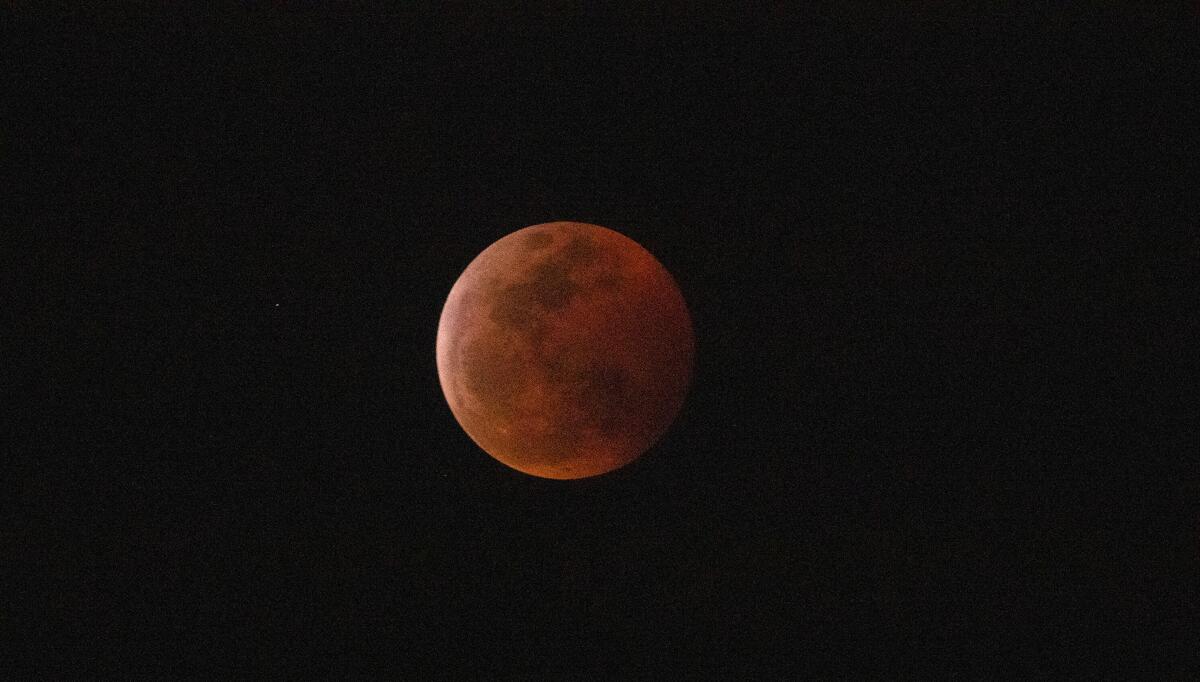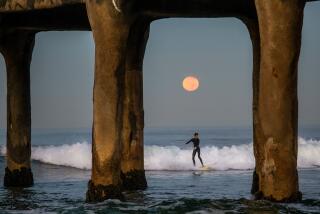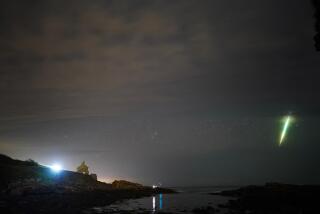Super Blood Wolf Moon eclipse puts on quite a show

Stargazers across Southern California can watch the full moon slip into Earth’s shadow on Sunday evening during an eclipse that will briefly turn the white-and-gray lunar surface red.
Scientists say the total lunar eclipse will begin with a partial phase about 7:34 p.m. PST when the moon begins to enter Earth’s shadow, about 19 degrees above the eastern horizon. The phenomenon will take about three hours.
The eclipse coincides with perigee, the point in the orbit of the moon at which it is nearest Earth. As a result, the moon will appear slightly bigger and brighter than usual — creating a “supermoon” effect.
Some science institutions, astronomers and media organizations are calling the event a “super blood moon.” The word “blood” refers to the expected change in color of the lunar surface, which will probably be red.
“Lunar eclipses can appear anywhere from golden to deep red in color,” said Lisa Will, an astrophysicist at San Diego City College.
“The reason is the sunlight filtering through the Earth’s atmosphere before it falls on the moon,” she said. “The sunlight is traveling above locations that are experiencing a sunrise or a sunset. The color of those sunrises and sunsets determine the color of the total lunar eclipse.
“The phrase ‘blood moon’ has become common for lunar eclipses, but ‘blood’ is the light of all of the sunrises and sunsets on Earth falling upon the moon.”
Will added that “ ‘Supermoon’ is the name given to the full moon phase when it also occurs at perigee, the closest point in the moon’s orbit to Earth.
“’Supermoon’ is not an official astronomical term,” she said, “and unless you are a truly dedicated sky watcher, you’ll likely not notice any difference in the size or brightness of the moon due to its closer distance.”
The term irks many scientists, including well-known astrophysicist Neil deGrasse Tyson, who said on Twitter in 2017, “The very concept of a Super Moon is an embarrassment to everything else we call super: Supernova, Supercollider, Superman, Super Mario Bros.”
Unlike a solar eclipse, you do not need protective eyewear to safely watch Sunday’s lunar event. Instead, you need a clear view of the eastern sky, and good weather.
The National Weather Service says the marine layer might develop along the coast around 8 p.m. Sunday. But in most areas, skies will be clear. Coastal temperatures during the evening will be in the upper 50s and possibly the low 60s. They will be in the mid- to upper 50s across inland valleys. The region will be warmed by offshore winds that are expected to develop on Saturday.
The temperature of the moon’s surface is another matter; it can drop hundreds of degrees during an eclipse.
Scientists say stargazers should be aware that they’ll be watching something of an optical illusion. The eclipse will appear to unfold slowly. But Caltech says the moon travels at 2,288 mph as it orbits Earth.
The Griffith Observatory in Los Angeles will hold a public viewing from 7:30 p.m. to 11 p.m. It will also live-stream the eclipse.
The eclipse was seen across the region and put on quite the show. Some samples from social media:
gary.robbins@sduniontribune.com
More to Read
Sign up for Essential California
The most important California stories and recommendations in your inbox every morning.
You may occasionally receive promotional content from the Los Angeles Times.









